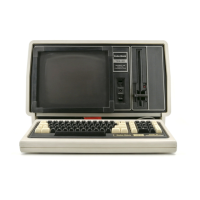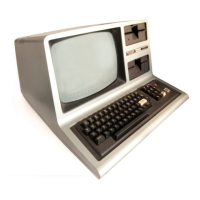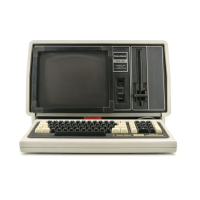You can print text
in
any order
as
well
as
any position using the PRINT@ statement,
as
illustrated in the following example. Enter the commands:
CLS:FORX= 280T035STEP·35:PRINT@X,"·";:NEXTX
You should see the asterisks (*) spaced diagonally
On
the display
as
shown below:
Ok
•
*
*
*
*
-11:.
*
*
*
Notice that the printing started at the bottom and proceeded
to
the top.
You should experiment with printing text at various locations on the display until you
feel comfortable with the PRINT@ numbering scheme.
Experiment
#3
Drawing Coordinate Axes
This experiment will show you how
to
draw standard
X-
Y type axes which will allow
sales data to be plotted
in
graph form. Enter the following program:
50
CLS
100
LINE(238t54)-(33t54)
150
LINE
-(33t0)
Execute this program. You should see a pair
of
axes displayed:
Line 58 This statement clears the display.
Line
lee
The horizontal axis
is
drawn from right
to
left.
Line 158 The vertical axis
is
drawn from bottom
to
top. Note that the LINE statement
contains only one coordinate, - (33,0). This illustrates another form of the LINE
statement which assumes that the first coordinate
is
the same
as
the last cell referenced
in a LINE, PSET or PRESET statement. In this case, the last cell referenced was
(33,54) and is used
as
the beginning cell for the vertical line.
102

